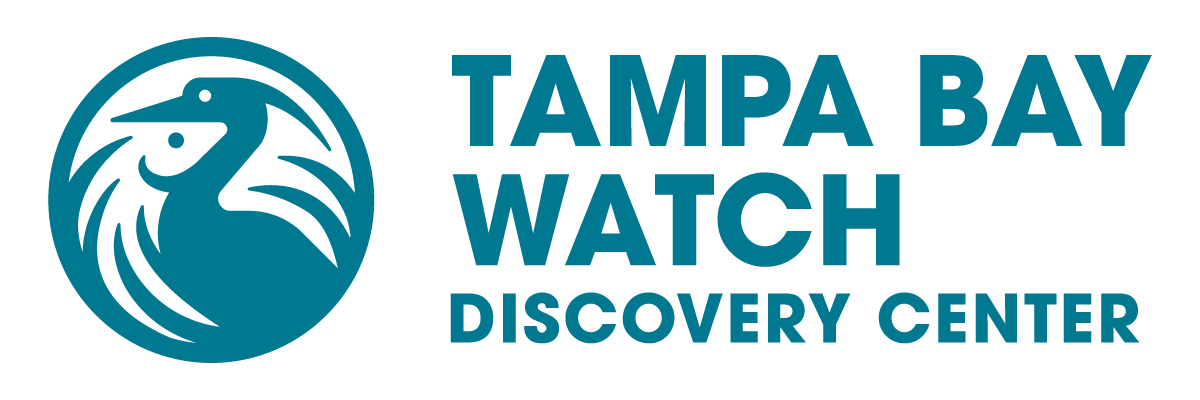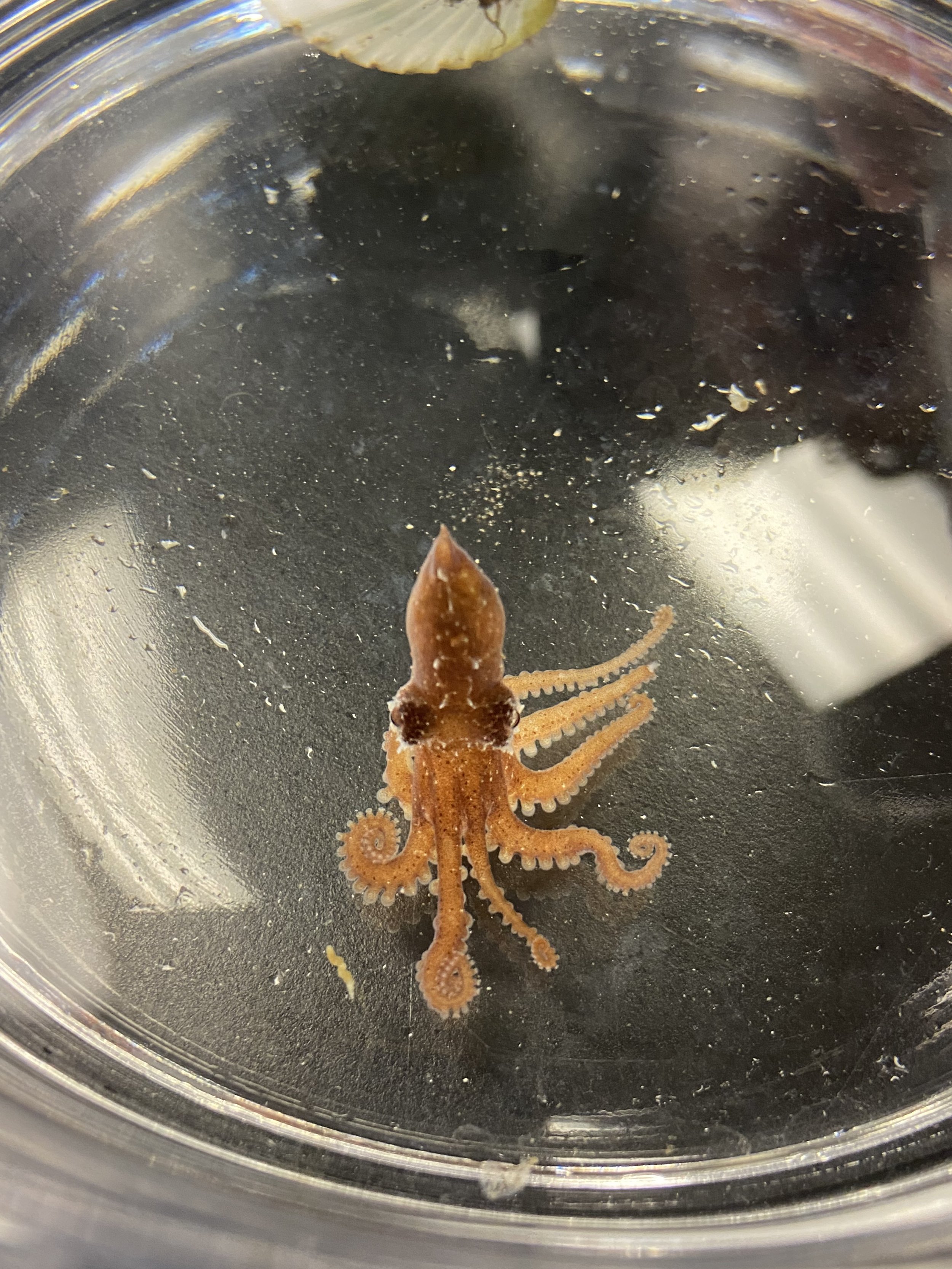The Common Octopus: A Global Master of Disguise
Juvenile Common Octopus photographed from sea wall at Eckerd College, September 2021. Photo credit: Kelsey Weeden
by Kelsey Weeden
The Common Octopus, Octopus vulgaris, is one of the most studied octopus species in Tampa Bay. This species can be found all over the world in tropical and temperate waters, and can live up to 200 meters deep. This octopus has eight arms that can each grow up to 3 feet long, and a big bulbous head. Each arm has two rows of suckers that the octopus uses to taste! Each octopus has a strong beak on their underside that they use to eat crustaceans and bivalves.
Octopuses have many unique adaptations that allow them to thrive out in our oceans. They are closely related to snails, except they lack that hard outer shell. Since their body is soft and squishy, an octopus can fit through any crevice, as long as its beak can fit. This helps them hide in between rocks where their larger predators can’t reach. Octopuses can also detach and regrow their arms. If an octopus is under attack, they can use one of their arms as a distraction and safely swim away.
Additionally, the Common Octopus can change the color and texture of their skin to help them blend in with their surroundings, or to appear more threatening. This species has also been documented picking up empty shells or other debris with their suckered arms and holding them around their body to help them blend in.
A female of this species will lay 100,000-500,000 eggs in her lifetime. The mother will lay eggs in her den and will guard them until they hatch. She will use all of her energy taking care of these eggs that by the time they hatch, she unfortunately passes away. Out of the hundreds of thousands of eggs that hatch, only a few of them will make it to adulthood. These octopus only live about 1-2 years.
Because of the low survival rate, this species is vulnerable to bycatch and pollution. At this time, these intelligent creatures are not a threatened species, but we can all do our part to keep it that way! You can help by removing trash from the water and eating seafood from sustainable fisheries.

